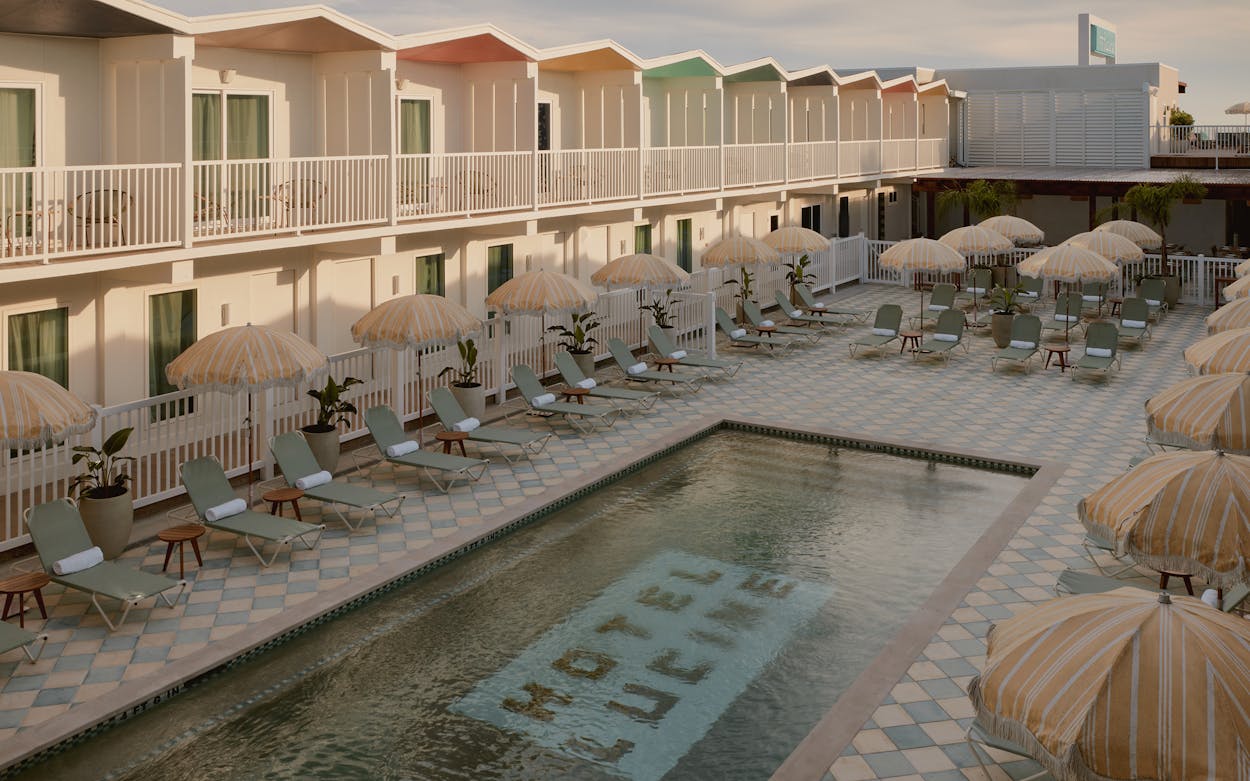When it comes to hotels, visitors to Galveston have traditionally had to choose between high and low. On the luxe side, there’s the 112-year-old, recently renovated Grand Galvez; the trés chic Tremont House, on the downtown Strand; and the sprawling San Luis Resort, with its ten restaurants, tennis courts, and swim-up bar. On the more economical end of the spectrum are the endless, nearly indistinguishable chain hotels that line Seawall Boulevard.
Hotel Lucine, which opened in November on the corner of Tenth and Seawall Boulevard, near Porretto Beach, offers something novel. The two-story, 61-room property began life in 1963 as Treasure Isle, a charming midcentury motor lodge built in a U shape around a large outdoor pool. The motel was built, owned, and operated by local architects, twin brothers who loved the building so much that they maintained their offices there. After passing out of family control, though, the motel entered a long decline.
That’s when Keath and Dave Jacoby stepped in. The married hospitality-industry veterans had recently moved to Galveston from Las Vegas, seeking a more congenial environment for their growing family. Keath grew up on the island, and she and her husband dreamed of converting one of the city’s dilapidated midcentury motels into a boutique hotel like Palm Springs’ Monkey Tree Hotel, New Orleans’s Drifter Hotel, or Austin’s Hotel San José. When they spotted Treasure Isle, which had been renamed the Pearl Inn and was clearly running to seed, the Jacobys knew they had the right place.
“It’s got great bones, and it was built pretty soundly, which is probably the reason it’s still here, unlike other places that were built around the same time,” Dave told me. “It had this big interior courtyard that was the central focus, and then a front-of-house area that feeds into that.” Along with real estate developer Robert Marcus, the Jacobys purchased the property in 2021 and have spent the past few years transforming it into an influencer-ready hot spot featuring some of the best dining and drinking options on the island.
To help restore the building’s midcentury cool, the Jacobys enlisted Austin design firm Preacher, which created the hotel’s whimsical typeface, pastel-heavy color palette, and name. “We wanted a strong, feminine persona,” said Preacher cofounder Rob Baird. “Keath has this saying that ‘Galveston is a peculiar woman.’ And the city does have this blend of Southern culture and Texas culture. It has its own Mardi Gras; it has this fascinating history. So we were looking for something that would conjure that spirit.”
It fell to another Austin firm, Kartwheel Studio, to turn that vision into reality. The first step, said Kartwheel founder David Clark, was stripping away all the clumsy renovations that had obscured Treasure Isle’s swinging-sixties glory. Clark then extended the hotel’s footprint all the way to Seawall Boulevard, providing more interior space for the cozy lobby—an all-day hangout spot dubbed the Den—and allowing him to add a second-floor deck with 180-degree views overlooking the Gulf of Mexico. He imported custom tiles from Nicaragua to create colorful accent walls throughout the property, commissioned midcentury-inspired leather furniture, and added retro touches like vintage alarm clocks to the rooms, which range from 265 to 335 square feet.
For the hotel restaurant, the Fancy, the Jacobys tapped chef Leila Ortiz, who had previously worked at David Chang’s Momofuku Noodle Bar, in New York, and Chris Shepherd’s UB Preserv, in Houston. Ortiz created a French-influenced, seafood-forward menu that Keath described as “comfort food with a twist.” “We call it fine-ish dining,” she told me. “We have very high expectations on the food and the service, but it’s very low pretense in terms of how it’s delivered.”
That combination of high and low carries through the entire hotel, from the Den’s casual yet elegant ambience to the stylishly funky pool, whose vibe Clark described as “Jackie O on LSD.” Throughout the design process, the Jacobys tried to remain faithful to the building’s original spirit. “We wanted to take this midcentury building and modernize it, but be true to the vision,” Dave told me. “So anything we put in there, we wanted to make it look like it might have always been there.”
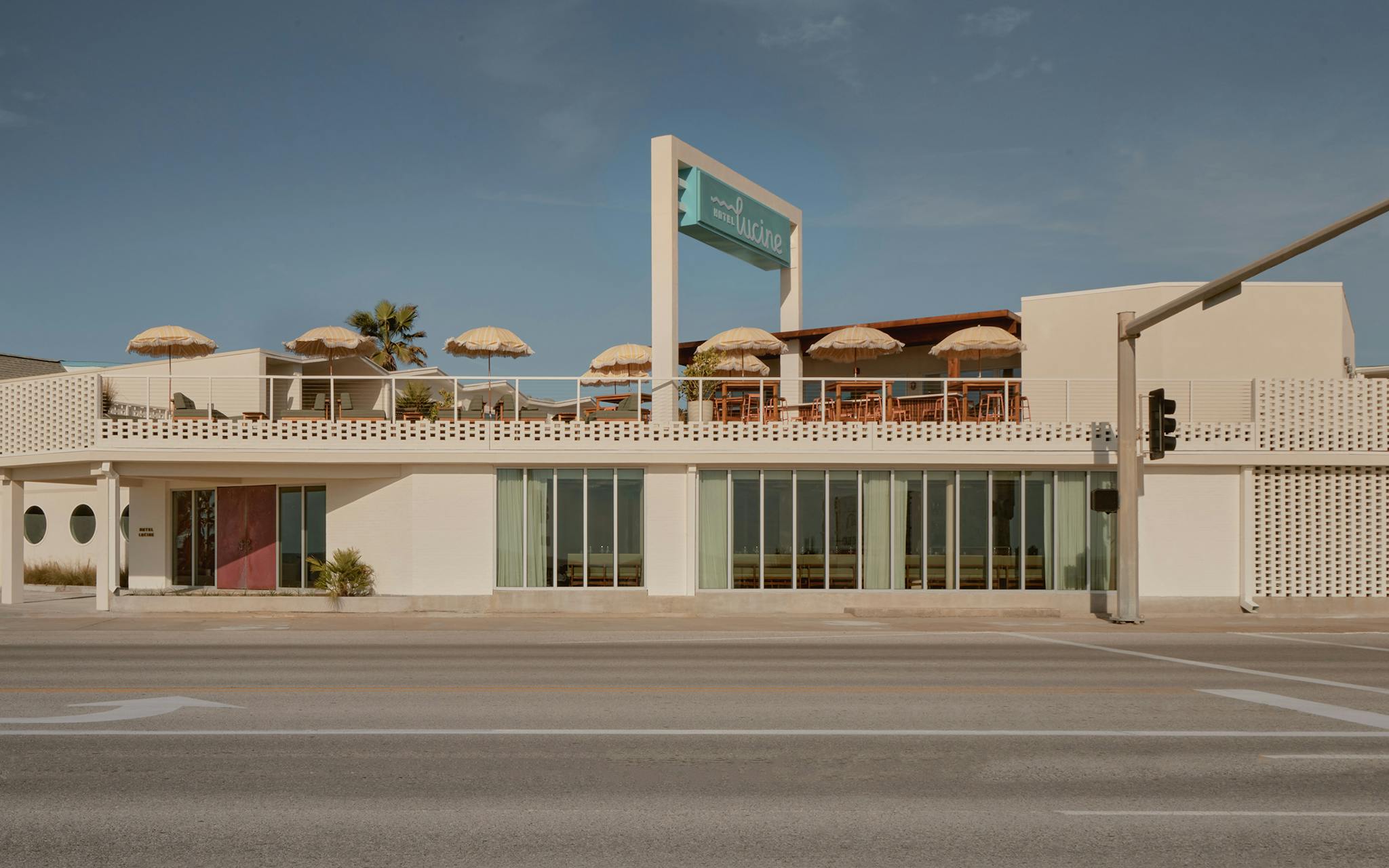

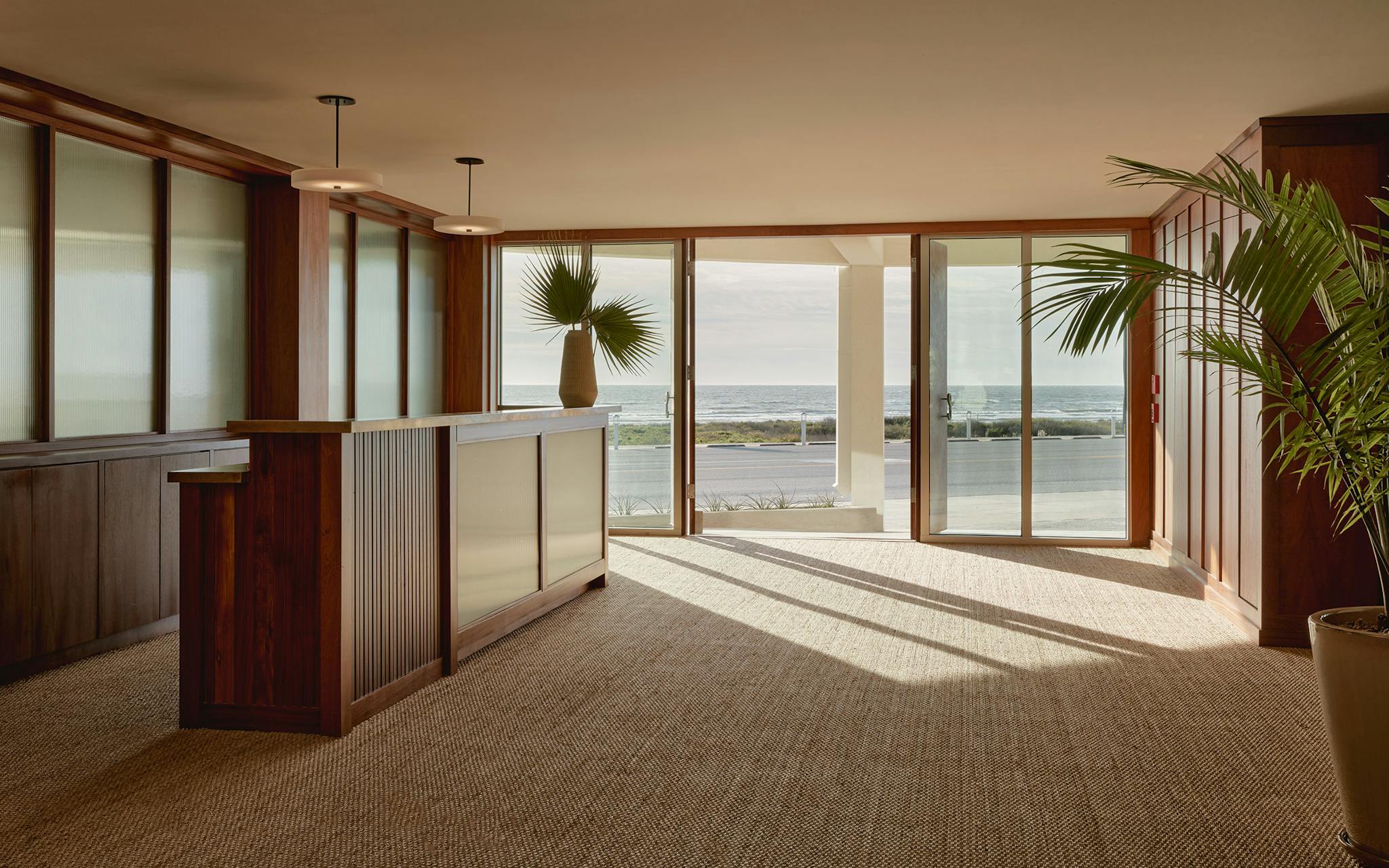
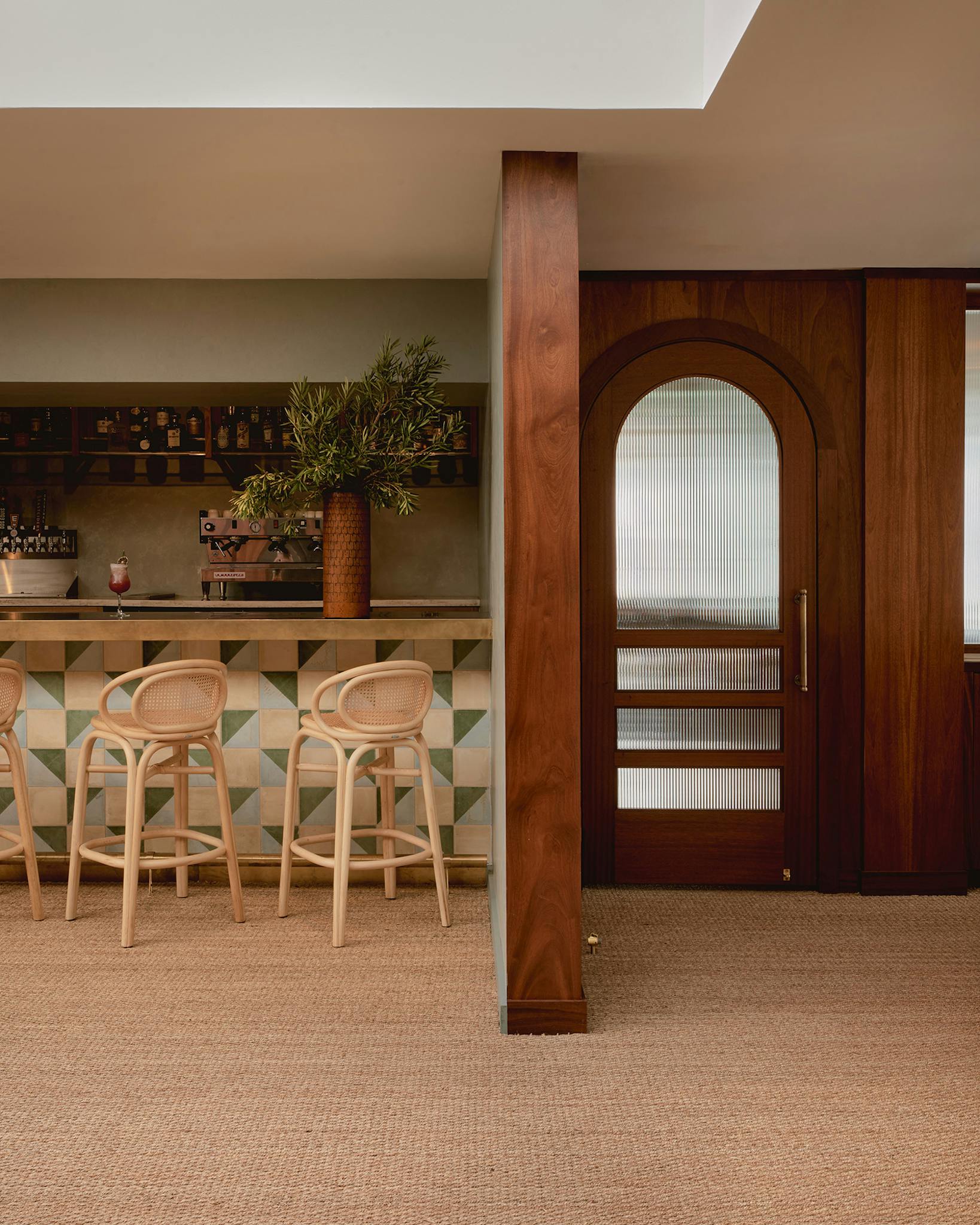
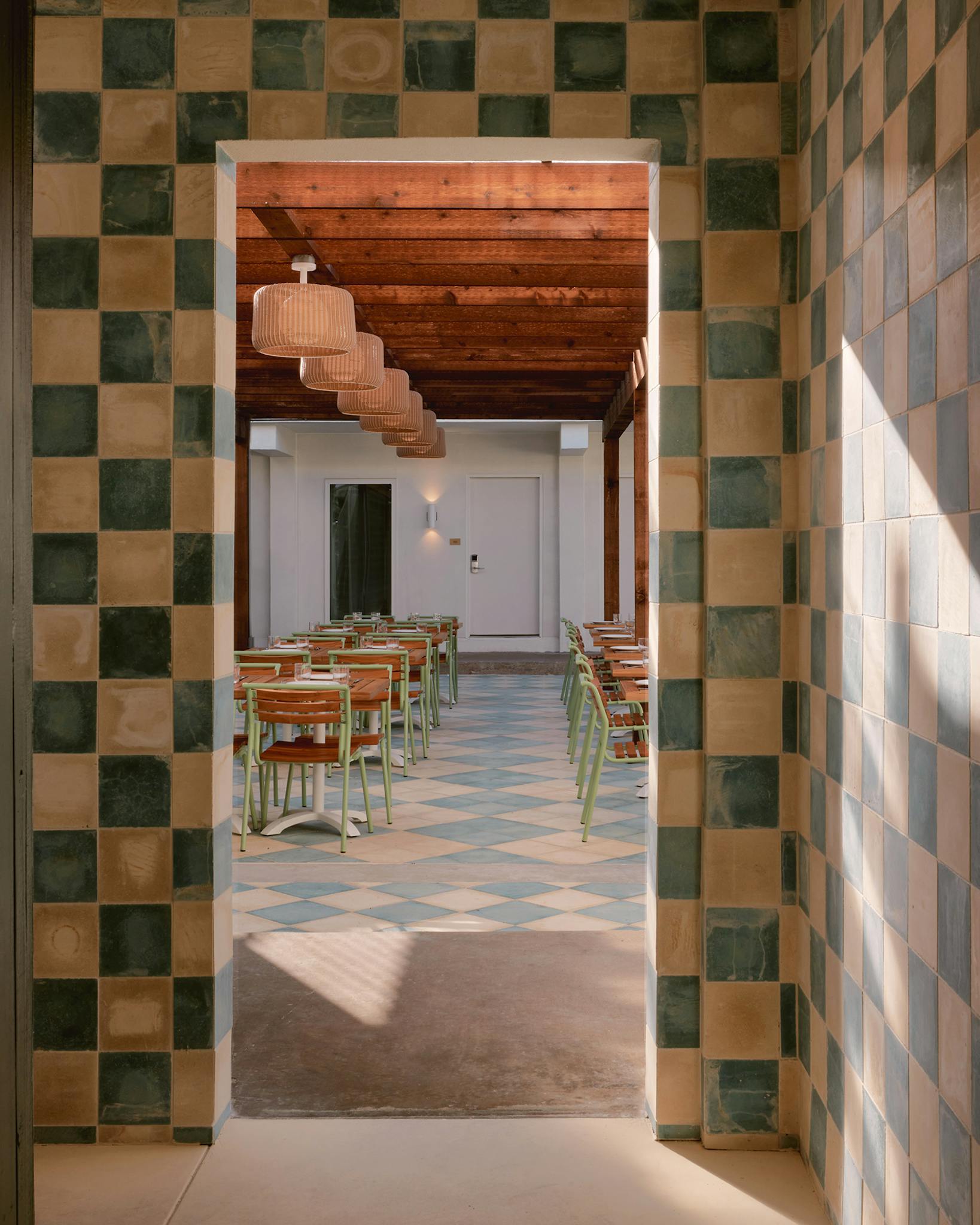
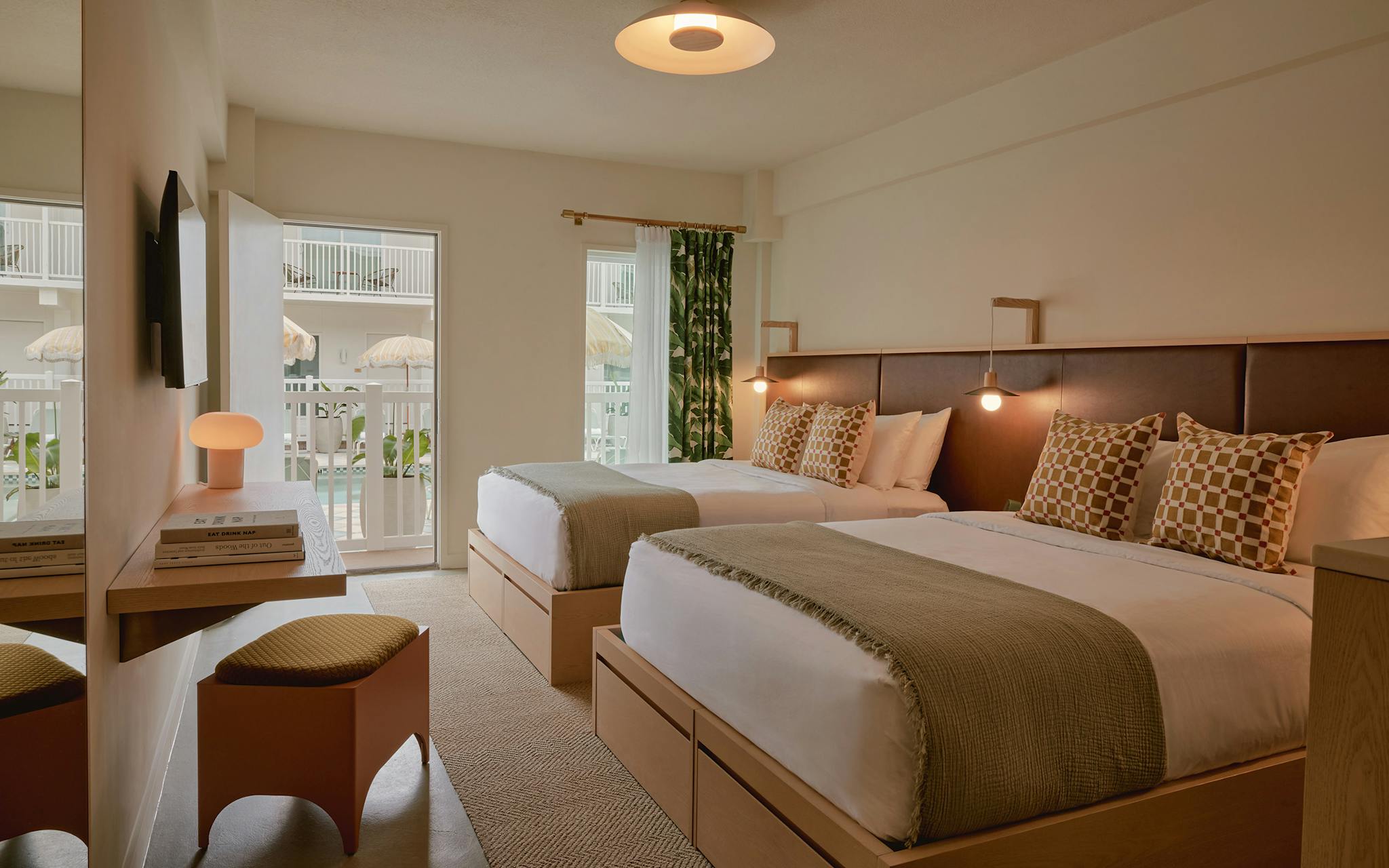
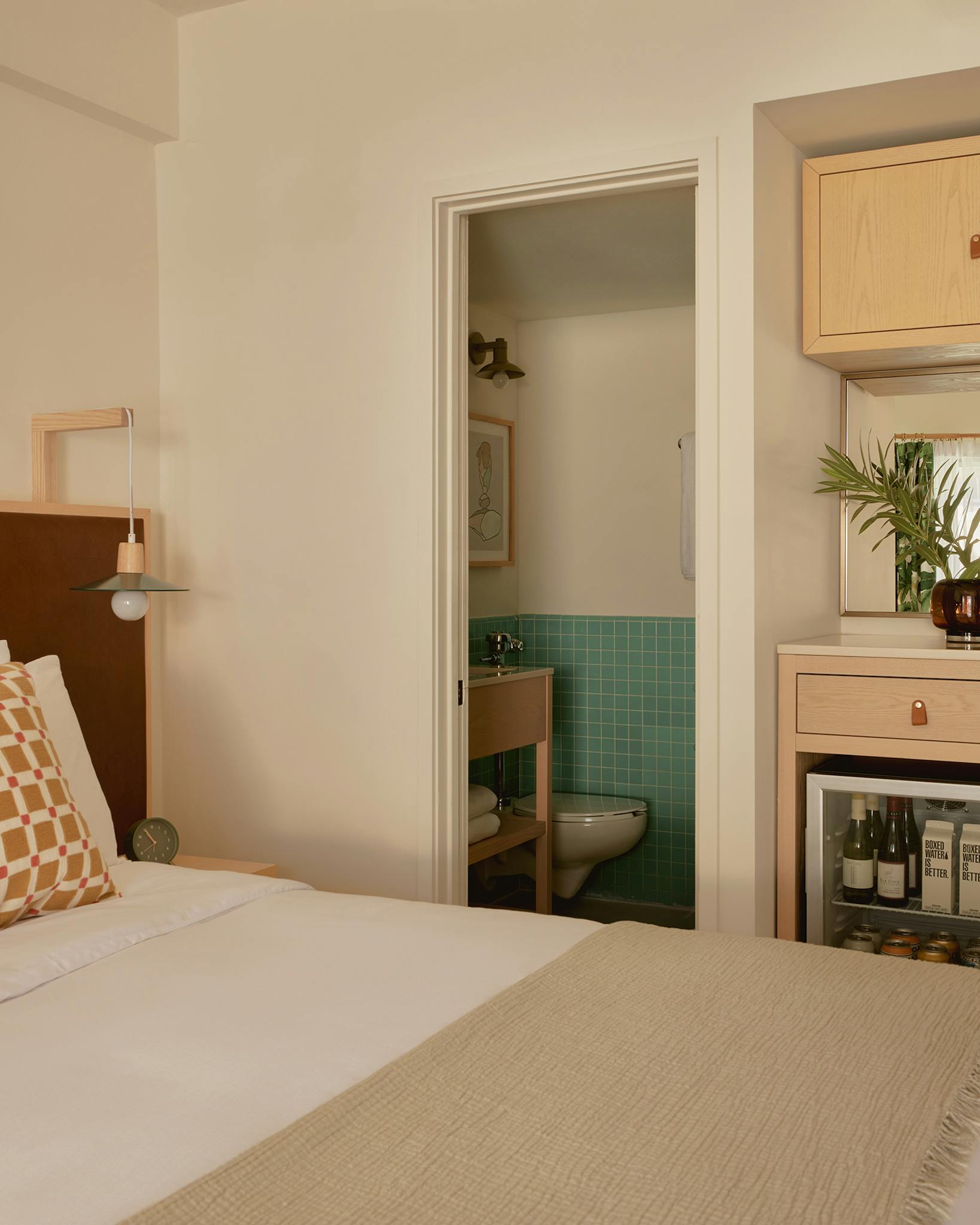
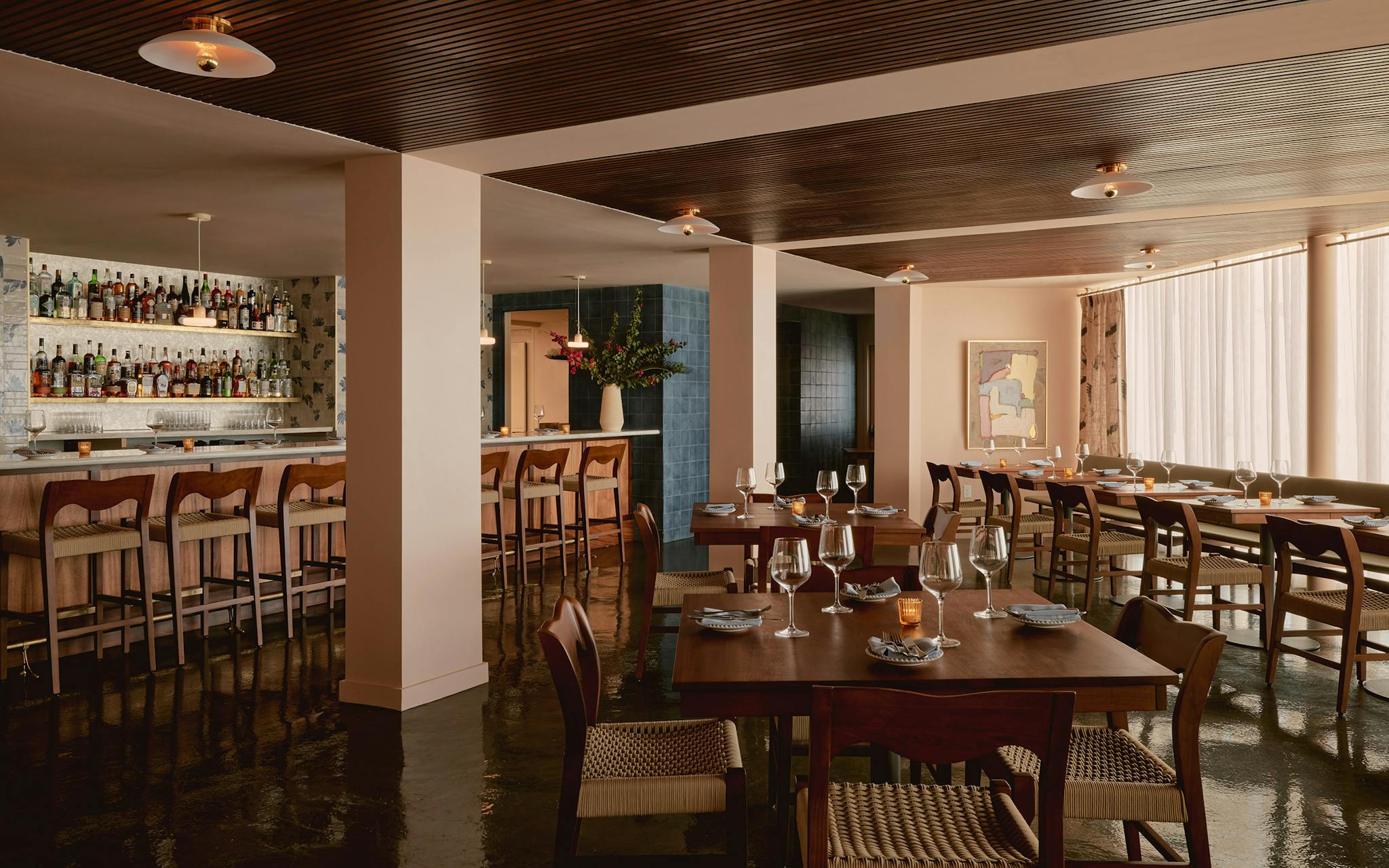
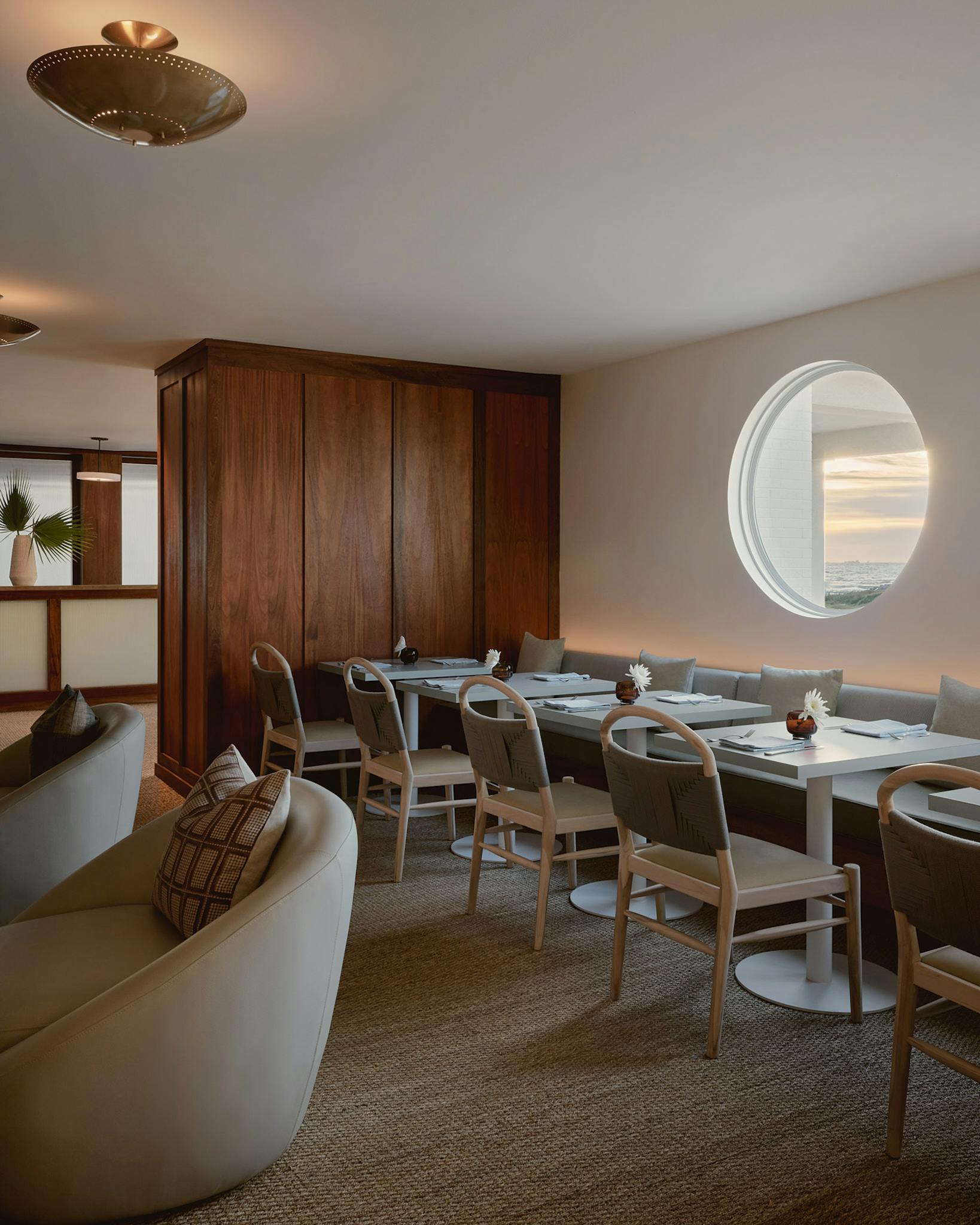
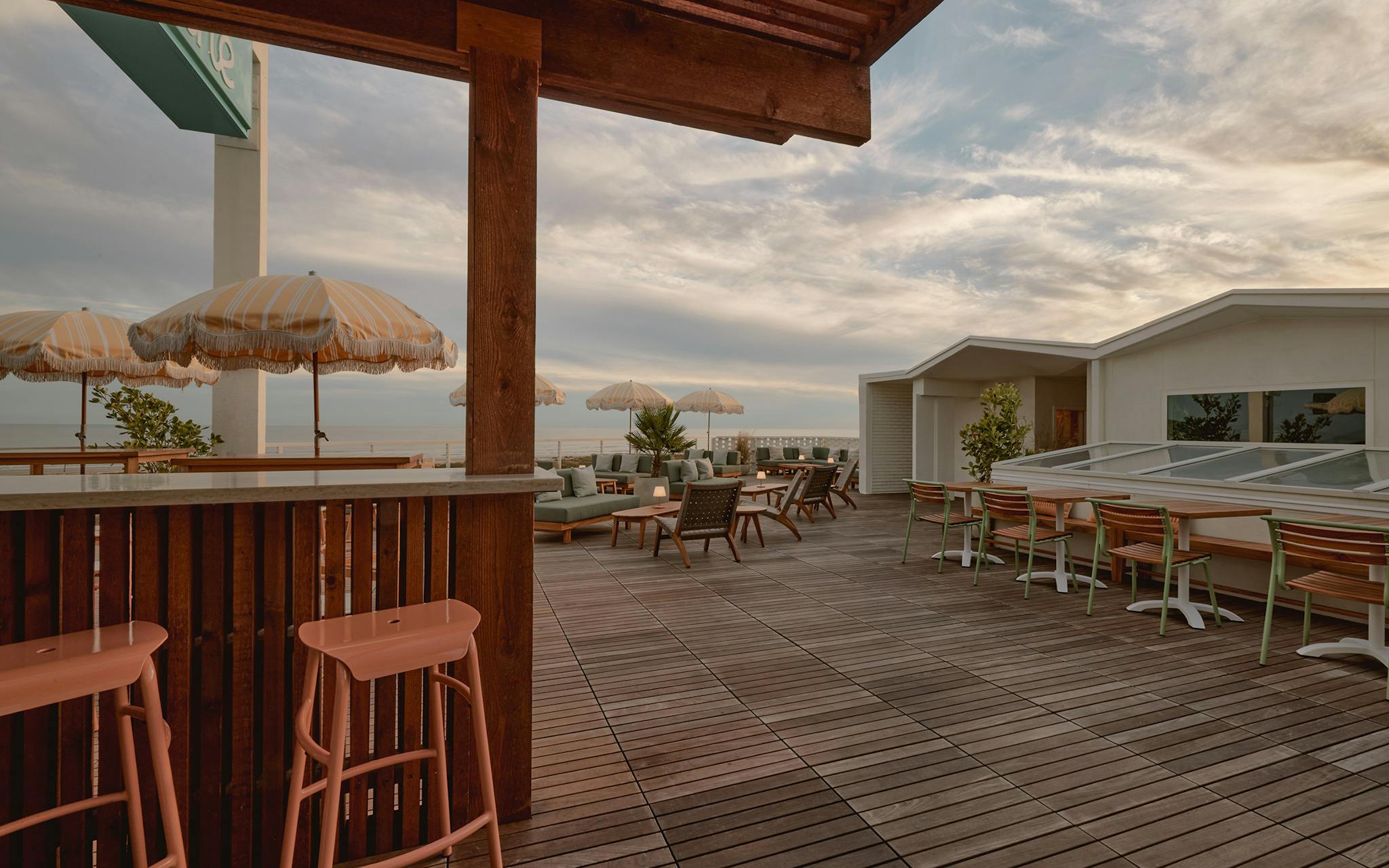
- More About:
- Style & Design
- Hotels
- Galveston


